|
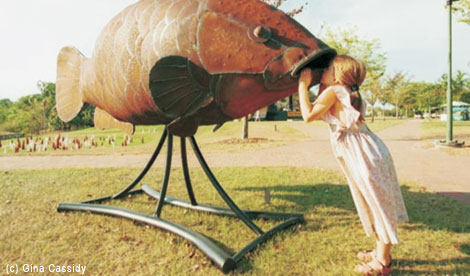
Using Visual Thinking Strategies
To Enjoy Art...and to Trust Ourselves to Learn
By Gina Cassidy
When people can interact with art on their own terms, they learn to trust – and enjoy – their own perceptions of art. They also learn to trust and depend on themselves for their own education.
Children are naturally creative. It matters to my son that his waffle is cut into interesting shapes. My six-year-old daughter loves combining clothes and accessories to create her own “look;” she takes a handful of pipecleaners and twists them into a dancing doll. This is not trivial; it is part of the human learning experience. Adults often separate the practical from the artistic. We suppress our artistic instincts at work and wherever else it would not be appropriate. We save our inspirations for home decorating and go to art museums on the weekends. Children do not suppress this instinct and that is what is fascinating about experiencing art through their eyes.
When I take my children to our nearby University art museum, I am no longer surprised by their interest and questioning: “When was this made”, “What does it mean?” They tell me what they notice about the artwork, look at it from different angles, suggest meanings and interpretations. Occasionally they laugh at a work, but never in a denigrating way, they simply enjoy it. This is part of the human creative experience.
I have often wondered what my pre-reading children are thinking when they look at picture books. As John Taylor Gatto points out, they do not need these books to learn to read. But they are getting something out of it. After one art museum trip, it struck me that when they study these books, they are studying art! They carefully examine the pictures, their eyes moving slowly over the page, taking their time before turning to the next page. When I read to them, they often point things out in the illustrations that were not apparent to me upon first glance.
I did not teach them to do this, or even suggest that they look at the pictures. They do this because it is natural for them to do it. Never have they questioned why humans make art. Never have they questioned their right to participate in the artistic experience, as viewers or as creators. It is part of being human.
So if the artistic impulse and interest is natural, why do adults shy away from art galleries and museums? Why do they dismissively say, “My five-year-old could do this,” or “I hope my tax money isn’t supporting this.”? Why are they embarrassed to participate in the quite natural endeavor of human artistic creation? Why do they consider it a tedious chore to examine and discuss art?
Because they have been taught that they don’t have the right to participate in and enjoy it. They have been taught that art has right answers and wrong answers. Those who get the answers wrong are corrected, mocked or sneered at by those who know the right answers. They conclude that either they just don’t get it or the emperor has no clothes. In either case it is not worth risking the embarrassment or frustration of participating in art exploration. They have effectively been shut out.
About two years ago, I volunteered to be an art docent at our favorite local park’s sculpture garden. To my amazement, the professor doing the training did not want us to tell people about the artist or about what a work meant. She wanted us to encourage touring groups’ exploration of art. We were to facilitate discussion by asking a general open-ended question and eliciting the group’s ideas about art. No expert summaries, no corrections.
This method is called Visual Thinking Strategies (VTS) and it was developed by cognitive psychologist Abigail Housen and Philip Yenawine. It confirms what advocates of non-institutionalized learning believe: Allowing people to learn for themselves is the most effective means of education.
Gradually, the three other docent trainees dropped out of the sessions. I believe they were terrified at being in a position of “authority” without knowing all the answers. What’s the point of “leading” a tour if you’re not giving information? How could you answer, “I don’t know” to participants?
I lead a session of mixed-age children at a housing project after-school program, one of special education fourth graders, several third grades, a mixed-age church group, a group of YWCA board members and a group of college teachers. In each case, the participants answered tentatively at first. There were silences. The participants looked at me expectantly, but I did not give them the evaluation they’d been taught to expect. I had to remind myself not to rush to fill in these silences. When they caught on that I was listening and paraphrasing their own answers (thereby reinforcing, legitimizing and clarifying them), they ventured into further participation. In each case a lively discussion, respectful disagreement and active listening emerged from the group. In each case, I learned something about the art and the individual knowledge and perspectives of participants. It was a fascinating and exciting process to be part of.
A 70-ish man from the church group seemed irritated at first that I would not give answers. He reminded me that I was supposed to be telling them about the sculptures. By the end of this tour, the same man happily exclaimed, “We knew more about art than we thought we did!”
It is important to remember that learning takes time and personal interest. What would the participants have learned if I had simply given them the script about each artist and work: name, date, influences, era, school of thought? They may have remembered a tidbit or two which would have been unconnected to anything else in their lives. They might have been able to show off to friends by repeating some factoid about what an artist said about his work. Soon this would fade and there would be no trace of the session left on their consciousness. This would have been superficial entertainment or, worse, an empty “educational” experience.
Having been led into a discussion of their own ideas, they learned that they do have something valuable to bring to the study of art. They learned that careful observation and respectful discussion can yield fascinating insights. If they wish to find out what the artist was trying to achieve or the technical details of the work, they can seek out this information. If they do seek it out, it will be a self-initiated learning experience, which is the only kind of learning that sticks.
Two mistakes avoided by using this method of “teaching” are: 1) trying to cram all possible information and interpretation into one session and; 2) presuming what the participant can and wishes to get out of the session. Using the VTS method, the docent doesn’t know how the discussion will turn out. She doesn’t presume to know the background knowledge, worldview or interests of the participants. She doesn’t insult their intelligence!
I believe this method can be brought to other areas of learning. It seems obvious that the study of literature can be enriched by using a similar technique. The questions simply need to be altered to address a written text rather than a work of art. But how would it be useful in science? Well, the scientific method is based on detailed observation and keeping all possibilities open. Open-ended questioning would allow participants to discover some scientific phenomena on their own. Once the gate is opened, these same learners could research more in-depth concepts and ideas for themselves.
I often think about how to use this deceptively simple technique in my role as parent. Occasionally, I ask my children what is going on in a piece of art they are examining. I have also learned to refrain from being a know-it-all when they ask questions. Often as not, I will say, “What do you think?” or “We can look that up next time we’re at the library.” I try to stop myself from helpfully offering unsolicited information. I have also learned that offering their own ideas back to them gives them permission to continue with a thought or line of reasoning. The greatest reward for doing so is that I learn from their observations about the world and they learn to trust and depend on themselves for their own education.
Gina Cassidy is a community college composition and developmental writing instructor. She has master degrees in English and Applied Linguistics and she’s a volunteer for Illinois Radio Reader for the blind and an art docent with the local park district.
Copyright © Life Media
Privacy Policy
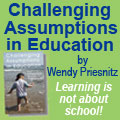 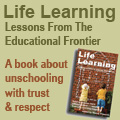 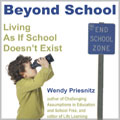
  
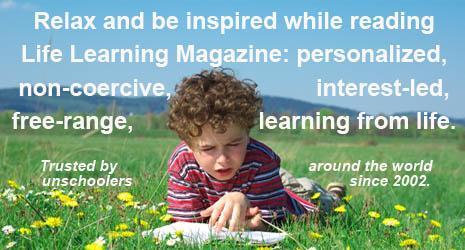
|

